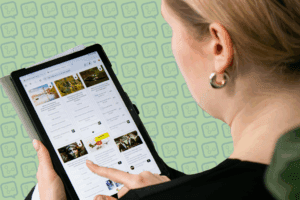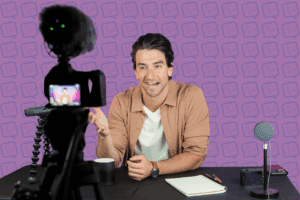Landing Pages Basics

In 1994, I created my first landing page for a marketing campaign. It was wild Internet times back then and we had to really create the concepts and technology from scratch that we now take for granted. But just like then, today landing pages are an essential part of any brand’s digital marketing strategy. They are designed to convert visitors into customers by providing a focused and optimized user experience. When it comes to maximizing conversions on a landing page, there are several key factors that brands need to consider. Here are some of the most important strategies and tactics that brands can use to maximize conversions on their landing page.
Clear and Compelling Headlines and Subheadings
The first thing that visitors to your landing page will see is the headline. It should be clear and compelling, grabbing the visitor’s attention and making them want to learn more. Use strong, action-oriented language to convey the benefit of your product or service. Subheadings should further expand on the headline and provide more details about the product or service you are offering.
Keep it Simple
The best landing pages are simple and straightforward. They should have a clear focus on a single offer or product, and visitors should be able to quickly understand what is being offered. Too much information or too many options can overwhelm visitors and lead to a high bounce rate. Use clean, simple design and limit the number of elements on the page to keep visitors focused.
Clear Call-to-Actions
A call-to-action (CTA) is the element on a landing page that asks visitors to take a specific action, such as signing up for a newsletter or making a purchase. It is crucial to have a clear and prominent CTA that stands out on the page. Use action-oriented language that creates a sense of urgency, such as “Sign up now” or “Get started today”. Make sure the CTA is easy to find and placed prominently on the page.
Social Proof
Social proof is a powerful tool for increasing conversions on a landing page. It refers to the idea that people are more likely to take an action if they see that others have already done so. Use customer testimonials, reviews, or ratings to show visitors that others have had a positive experience with your product or service. This can help to build trust and credibility with visitors.
Visual Content
Visual content such as images and videos can help to make your landing page more engaging and memorable. Use high-quality images that showcase your product or service, and consider using videos to demonstrate how your product or service works. This can help visitors to better understand what you are offering and make them more likely to convert.
A/B Testing
A/B testing is the process of testing different variations of your landing page to see which one performs better. This can help you to optimize your page for maximum conversions. Test different headlines, images, CTAs, and other elements to see which ones resonate best with your audience. Make sure to test one element at a time and keep track of your results to see what works best.
Mobile Optimization
Mobile optimization is essential in today’s digital landscape. More and more people are accessing the internet through mobile devices, so it is crucial to ensure that your landing page is optimized for mobile. This means using responsive design that adjusts to fit different screen sizes and optimizing load times for mobile devices. Make sure your CTAs are easy to tap and that your page is easy to navigate on a small screen.
Fast Loading Speeds
Loading speed is an important factor in user experience and can have a significant impact on conversion rates. Visitors are more likely to bounce if a page takes too long to load. Ensure that your landing page loads quickly by optimizing images, minimizing the use of external scripts, and using a content delivery network (CDN) to deliver your content more quickly.





